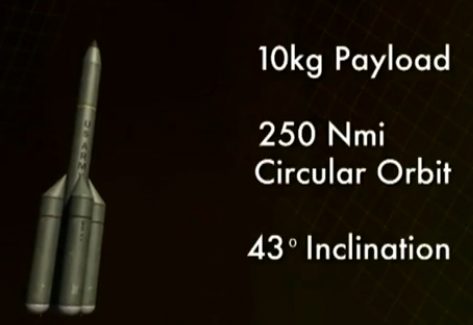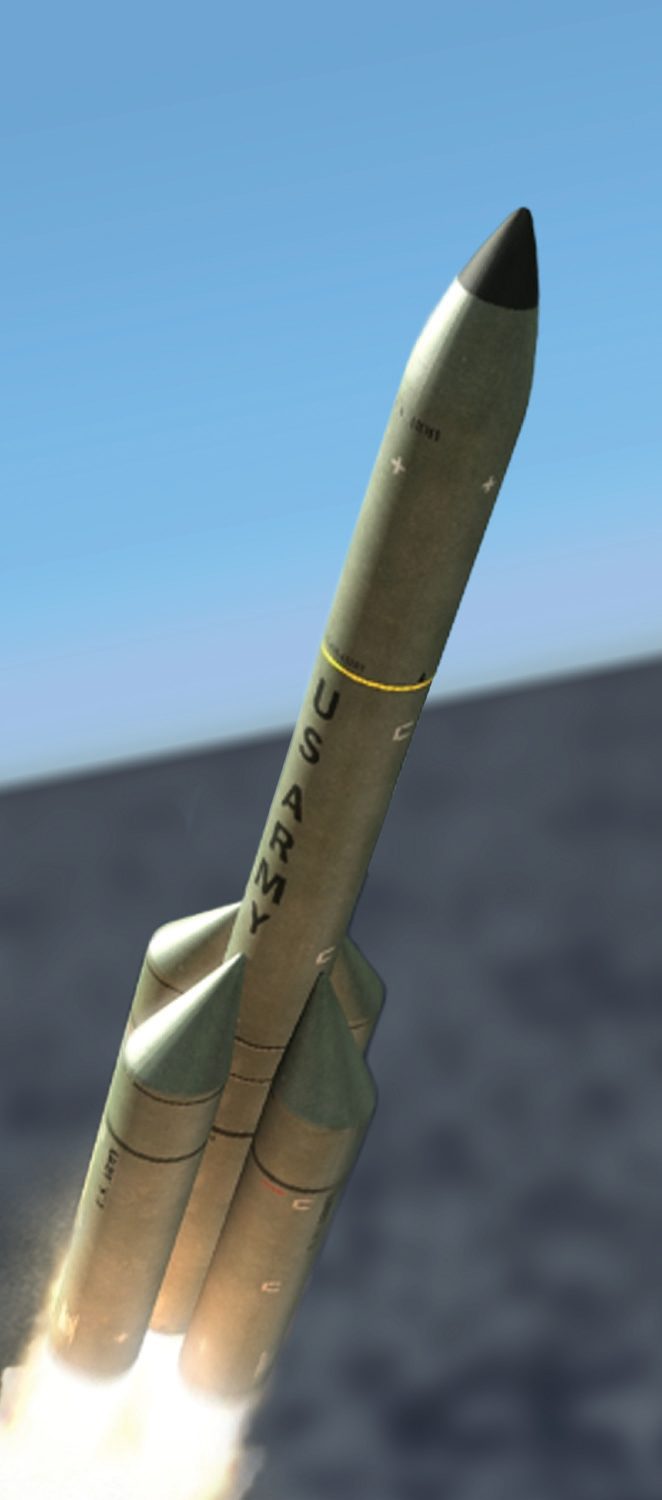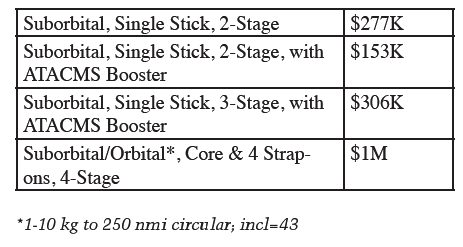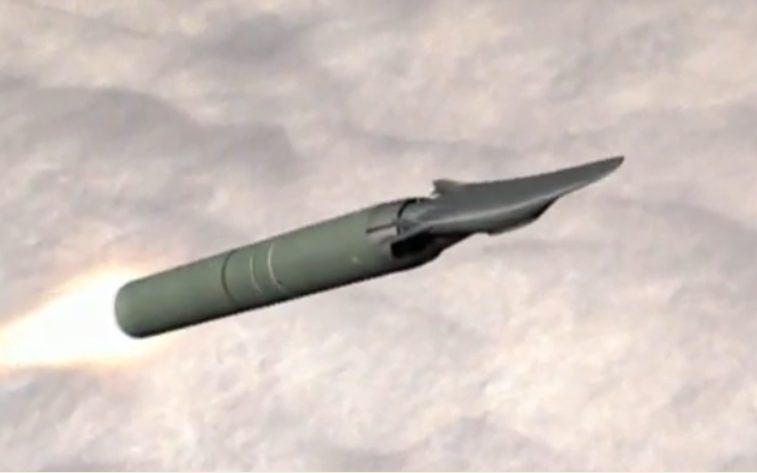Now under development for the Army is a modular suborbital/orbital launch vehicle known as MNMS (Multipurpose Nano Missile System). In its basic form, it will be composed of 24-inch diameter cylindrical rockets using pressure fed ethane/nitrous oxide engines. Stack two of these stages together, and a third, smaller stage and cluster six more stages around the first, and you can put 10 kilograms into orbit. At a vehicle cost of $1,000,000 it’s about the cheapest way to put something into orbit… but it works out to a hundred grand a kilo, ten times more expensive per kilo than the Space Shuttle. It can also use surplus ATACMS solid rocket boosters and surplus MLRS rockets.
A video of the concept can be seen here.
It can be used to lob small satellites into orbit, conventional munitions, experimental payladds, and almost certainly things like tactical hypersonic boost-glide recon bots.
10 Responses to “Multipurpose Nanomissile”
Sorry, the comment form is closed at this time.




From what I’ve read recently, the operational hypersonic boost-glide vehicle is supposed to go aloft on a modified SM-3 Standard missile launched off Navy platforms:
http://www.aviationweek.com/aw/generic/story_generic.jsp?channel=defense&id=news/asd/2010/02/04/02.xml&headline=Darpa
Considering the level of air defense it would take on the part of an enemy nation that would make “tactical hypersonic boost-glide recon bots” necessary to avoid their interception, you probably don’t want to shoot one at them, because those nations might well have WMD’s and get all “funny in the head…you know…’funny’ ” and then do a “really silly thing” if they see something hypersonic heading their way on their radar.
> the level of air defense it would take on the part of an enemy nation that would make “tactical hypersonic boost-glide recon bots” necessary to avoid their intercep
A more likely reason for such a system would be *fast* recon data.Subsonic airplanes and satellites in fixed orbits can often take a *really* long time to take a picture of something.
That’s very small for any sort of system that can get any sort of optical data of any good resolution gathered.
And it’s going to come in at one very high price per low-res photo.
…a lot more likely job is that it’s intended to be used for quick-reponse ASAT work.
And I suspect it comes off of the belly or under the wings of something like an F-15 in a high altitude zoom climb, considering its small size (12′ ?!) – given the altitude and speed a F-15 could get it to to on launch, giving the system a greatly improved total payload capability over something that’s surface-launched, due to its small size.
> hat’s very small for any sort of system that can get any sort of optical data of any good resolution gathered.
Oh, I dunno. Strip down a Nikon D3S, say, put it in a carbon fiber and styrofoam sphere, give it some rudimentary attitude controls that keeps it pointed nose down while it’s exoatmospheric and give it the guts of a good cell phone for a transmitter, and fire it off over the target and let it click away.Put some C-4 to blow it to flinders on it’s way down, or just let it crash.
It could weigh substantially more than the 10 kg orbital satellite, of course.
Seeing this reminds me of the al-Abid missile at first glance…
the concept reminds me strongly of OTRAG – multiple indentical and simple modules clustered together ..
This will never enter service. It is too sensible of a proposal and I can’t imagine that the Air Force will be too pleased with the Army edging in on its turf.
Despite being an Army project, this seems to have a lot in common with the multi-pod pressure-fed design of the Microcosm Scorpius, and also with the F-15-launched satellite vehicle, two concepts AFRL has played with but was never able to fund to completion. I wonder if the Army is working with AFRL on this. See the papers from the Conference on Small Satellites on both these uncompleted projects.
I worked a bit on the F-15-lofted microlauncher, partially inspired by 1958’s NOTSNIK, before it morphed into the hopelessly impractical RASCAL (a program which prompted a cost analyst I know to say, “They’re smoking crack.”) I provided AFRL with the NOTSNIK data I accumulated in the course of writing The First Space Race. There was a post-RASCAL AFRL investigation into a version of the original idea, using an F-15 or F-22, but I don’t think it ever made it past the paper stage.
The air-launched, five-stage NOTSNIK, which would have worked with some more testing and funding (rather than posting its actual record, most likely getting one shaky orbit out of six launches), weighed 930kg and was the smallest satellite launcher to date.
Matt Bille
Author, The First Space Race: Launching the World’s First Satellites
http://www.mattwriter.com
I notice in the video that the propellants are to be chilled; that sounds like a throwback idea to the era of LOX/kerosene missiles and will make its ease of use questionable, as you will have to tank it up just before liftoff.